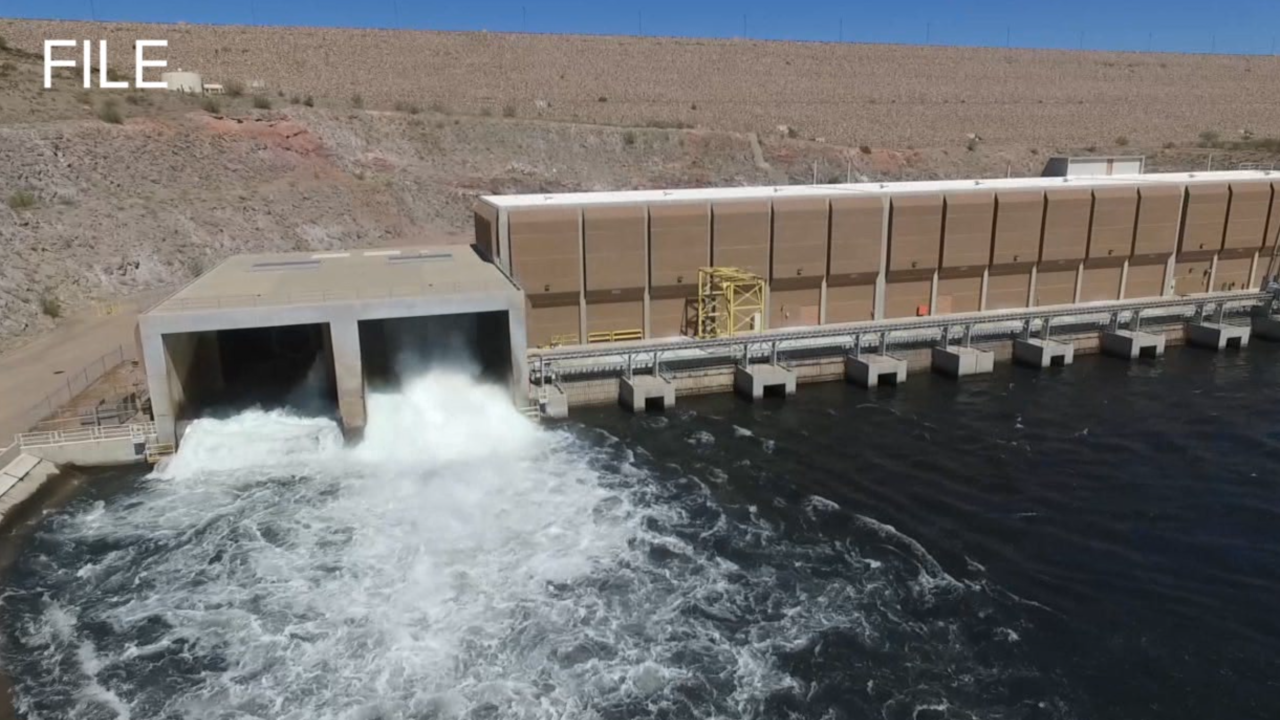MESA, AZ — Massive buildings are sprouting from our desert landscapes, their footprints normally more than a million square feet. The structures are filled with computer servers processing and storing huge amounts of data.
“This recent one is on 196 acres, it’s going to be divided into three phases,” said Mesa Vice Mayor Jenn Duff.
Duff is the only city council member to vote no on a recently approved $800 million data center - rumored to be for Facebook - after discovering the facility would eventually use 1.75 million gallons of water every day for cooling their rows of servers once fully operational. This as state reservoirs like Lake Mead and rivers like the Colorado are so low that federal restrictions are likely to be triggered on Arizona’s water allocation as early as next year.
“So, when I think about that and I think about the huge impact of a data center that uses water for cooling, it’s something I felt wasn’t a good use of water for our city,” said Duff.
She says it’s the eighth data center approved in the City of Mesa and while they do generate millions in state taxes and fees for the water and electricity, the newest facility, like many others, will only employ around 150 people.
“They’re not high-income jobs and they don’t employ a lot of people that’s for sure,” said Duff.
“If you want to bring in new businesses and industries that are going to be water use intensive, that should be more heavily scrutinized,” said Dr. Christopher Castro, Professor of Hydrology and Atmospheric Sciences at the University of Arizona who agrees with Duff’s apprehensions. “So, my question to them is where exactly is this water coming from? Is it sustainable? Are you accounting for our conditions of being in a long-term 20-year megadrought?”
Right now, that water source would be drawing from the same one soon to be requiring cuts from our agriculture industry and possibly others in the future. That’s not to say companies running these data centers aren’t trying to reduce their water footprint.
Some use air conditioning systems while others are experimenting with using methods like free-air cooling, which uses fresh outdoor air to cool a space. However, it only works in cooler climates.
“If you want to talk about things like maybe using reclaimed or recycled water, treated wastewater, then those are perhaps more viable solutions,” said Castro.
As of now, that’s not the case with this latest approval or a Google data center currently under construction in Mesa. Once completed, the new facility alone will use the same amount of water on a daily basis as 9,200 homes. Duff says it was something she just couldn't ignore.
“If we weren’t in this cut back already, it might be different, but we are in a danger zone in my opinion,” said Duff.
Here are some quick facts about data centers in the City of Mesa.
Mesa Data Centers
- There are currently only two fully operational data centers in Mesa. Only one of them uses a water-cooling system. However the city of Mesa would not tell us how much water is being used at the facility due to "privacy rules".
- One data center is in construction.
- The remaining five data centers are in different stages of the design or planning.
- Out of the eight data centers, only three use water cooling systems.
City of Mesa Response to concerns over water usage by data centers:
- Mesa has a 100-Year Assured Water Supply designation from the Arizona Department of Water Resources. This designation means that Mesa has shown continuous, physical, and legal availability of water along with water quality and financial capability standards to maintain water supplies.
- About two years ago, the Mesa City Council approved the Large Customer Sustainable Water Allowance ordinance. This policy creates a water “budget” for large water users who project their demand to be a half-million gallons or more of water per day. The ordinance requires these mega users to stay within their water budgets and in some cases, they must bring their own water to the table – meaning they must acquire long-term storage credits on their own that they turn over to the City of Mesa. These credits are used over time to meet the large water demands of their business operations. This ordinance protects Mesa’s water supplies from being compromised by mega water users, while allowing industries who bring economic development opportunity to still be able to locate to Mesa.
- *However a recent study by Arizona State University states these credits are over allocated across the state. https://morrisoninstitute.asu.edu/myth_of_safe_yield
- Large industry does not use treated wastewater (effluent) for operations in Mesa because there is greater benefit for Mesa residents to use its effluent to exchange with the Gila River Indian Community for potable water supplies and recharge to the aquifer. The benefit is both in value and in resource.
- For example, a data center that uses a water-cooling system will circulate the water several times. They will send that wastewater back to the City to be treated. Once treated, that water is sent to the Gila River Indian Community for potable water supplies and recharge to the aquifer.
- *The city however did not reveal what the actually percentage of water is recaptured and distributed through this process.
- Mesa has long prepared for shortage through careful planning to build a robust infrastructure and water portfolio. Mesa residents would not be affected by initial shortages on the Colorado River.
- Regarding a possible Colorado River Shortage, Mesa has long prepared for shortage through careful planning to build a robust infrastructure and water portfolio. Mesa residents would not be affected by initial shortages on the Colorado River.
- We have known for many years our Colorado River supplies could be cut.
- Mesa has a Water Shortage Management Plan online at www.mesaaz.gov/water [mesaaz.gov]





